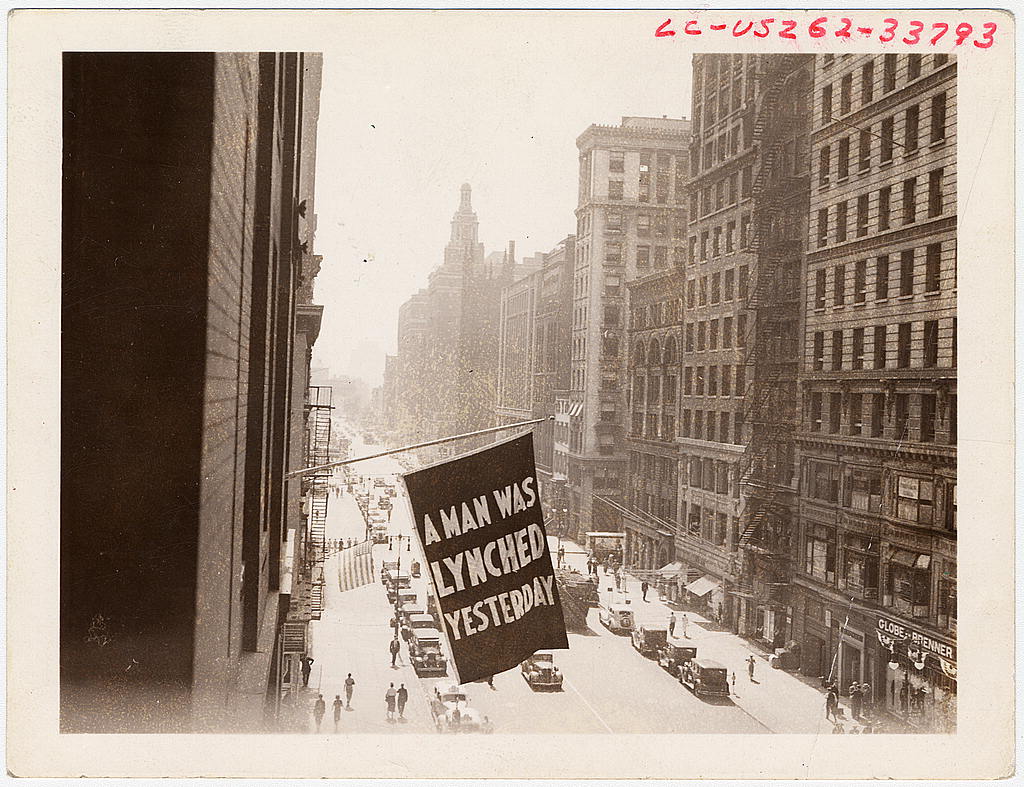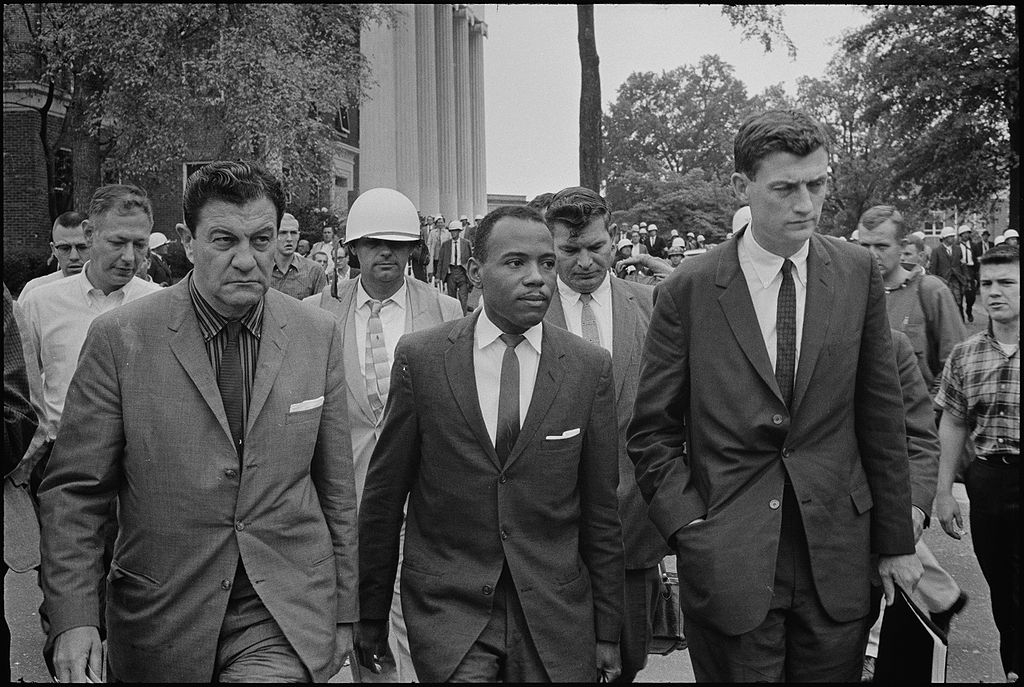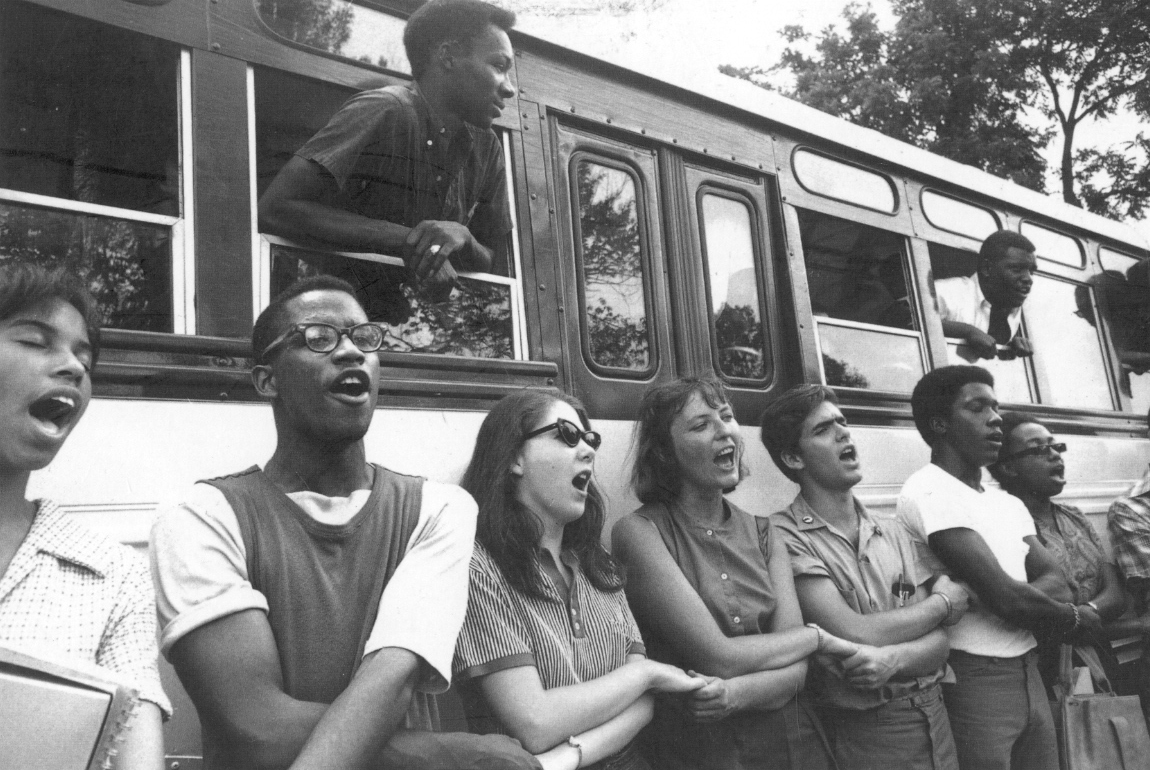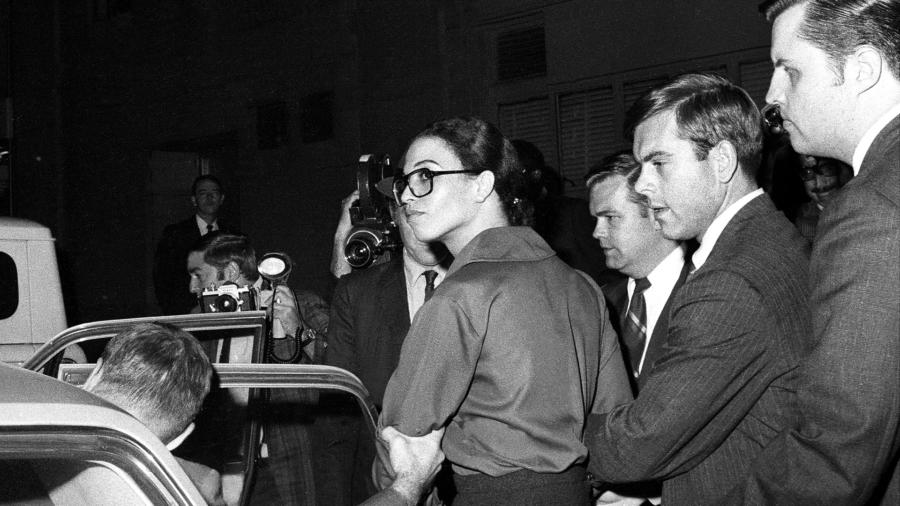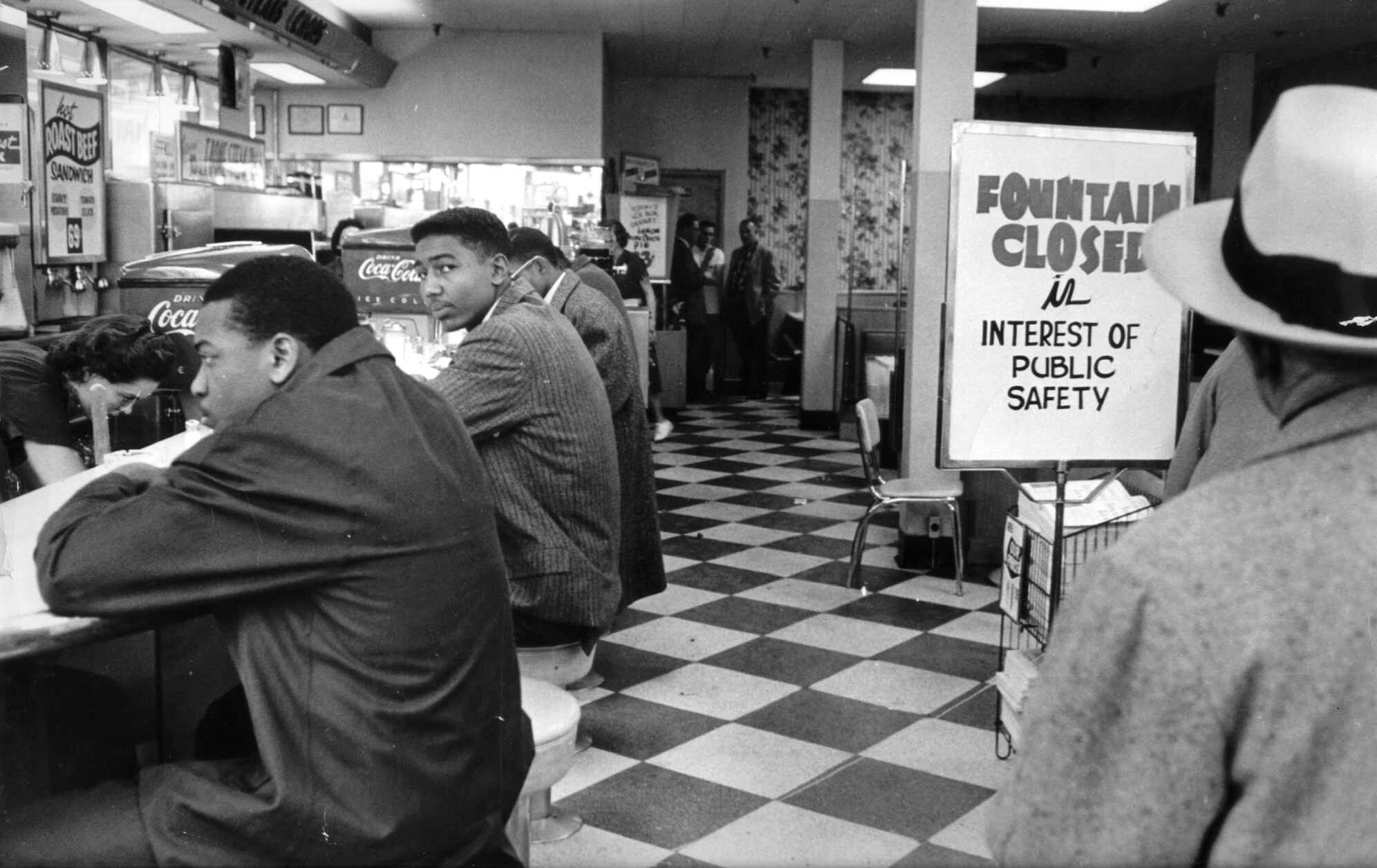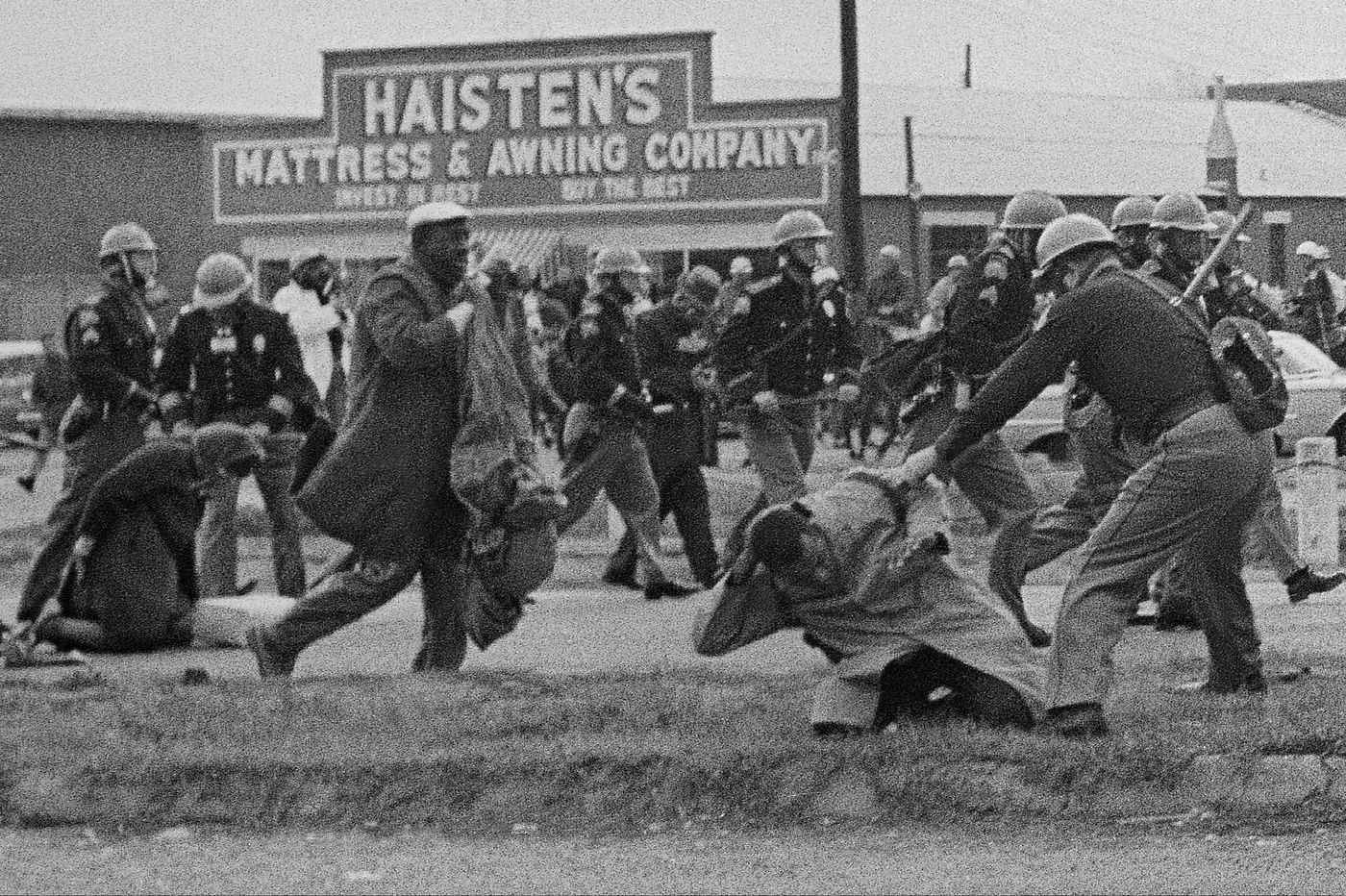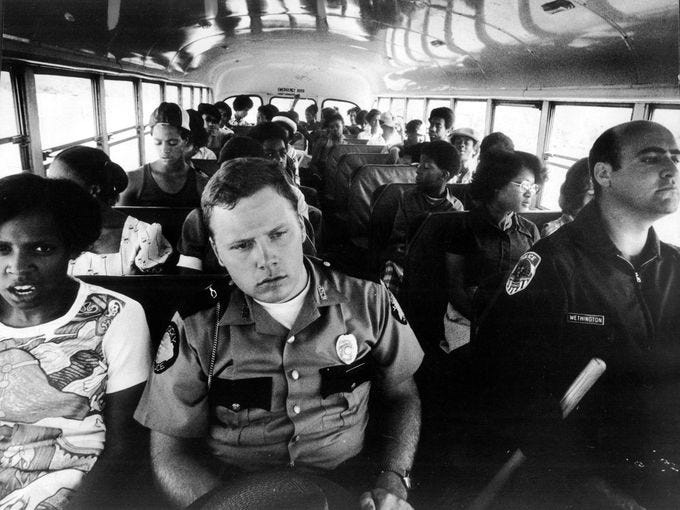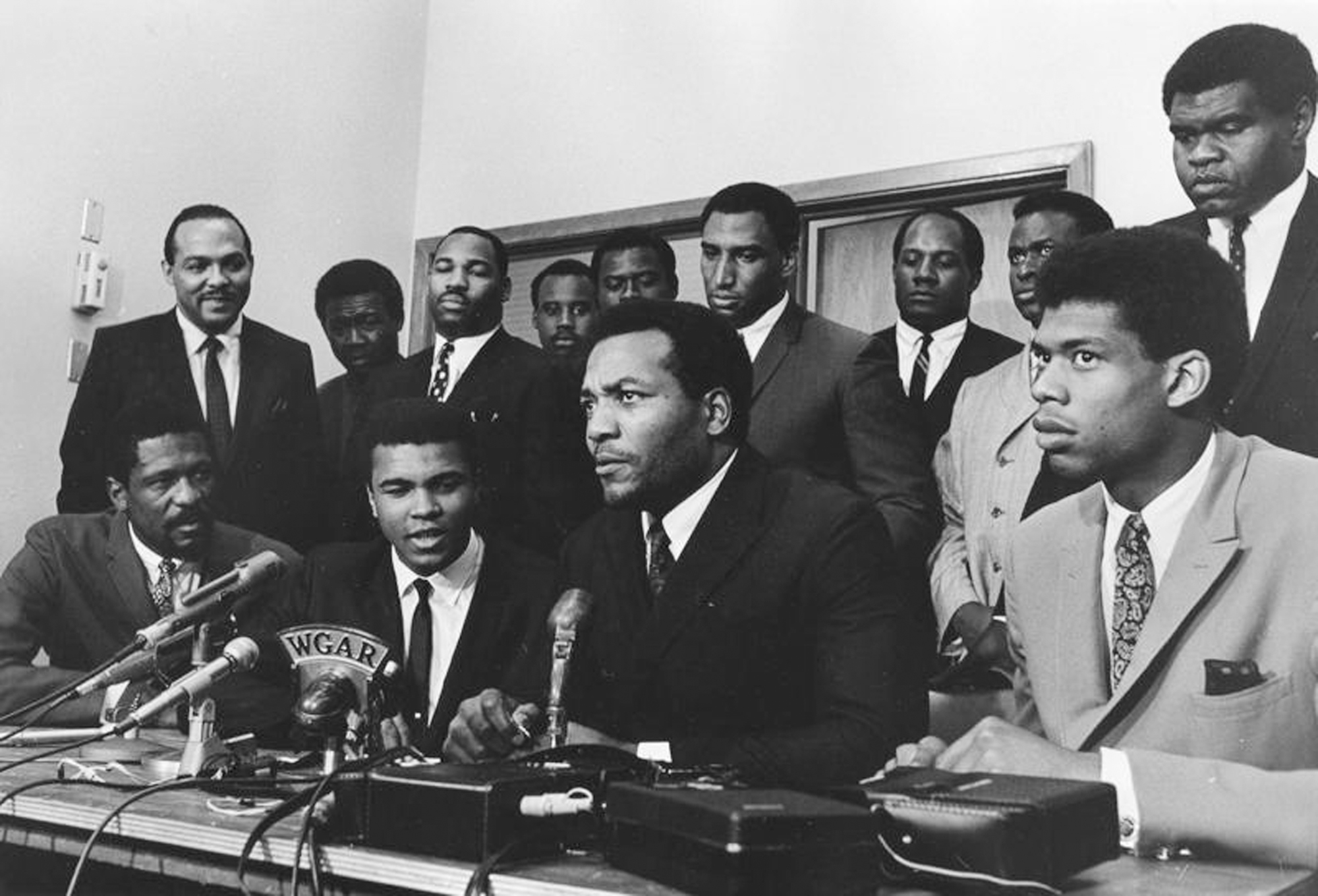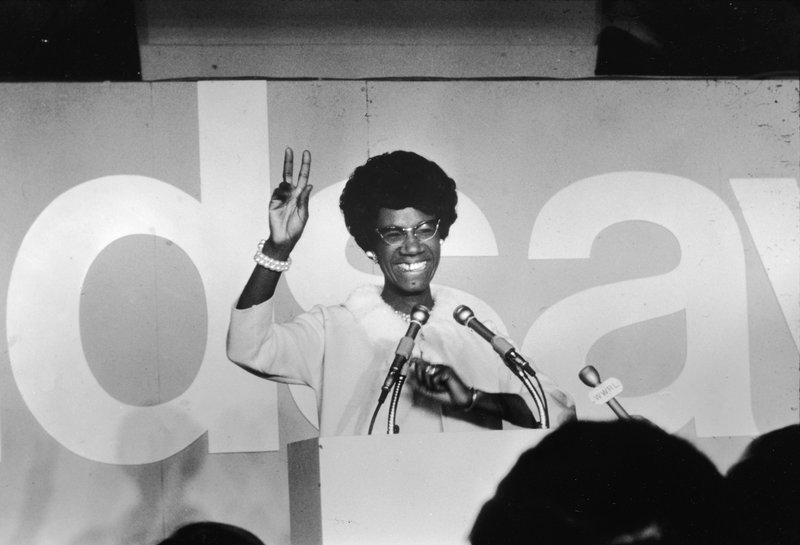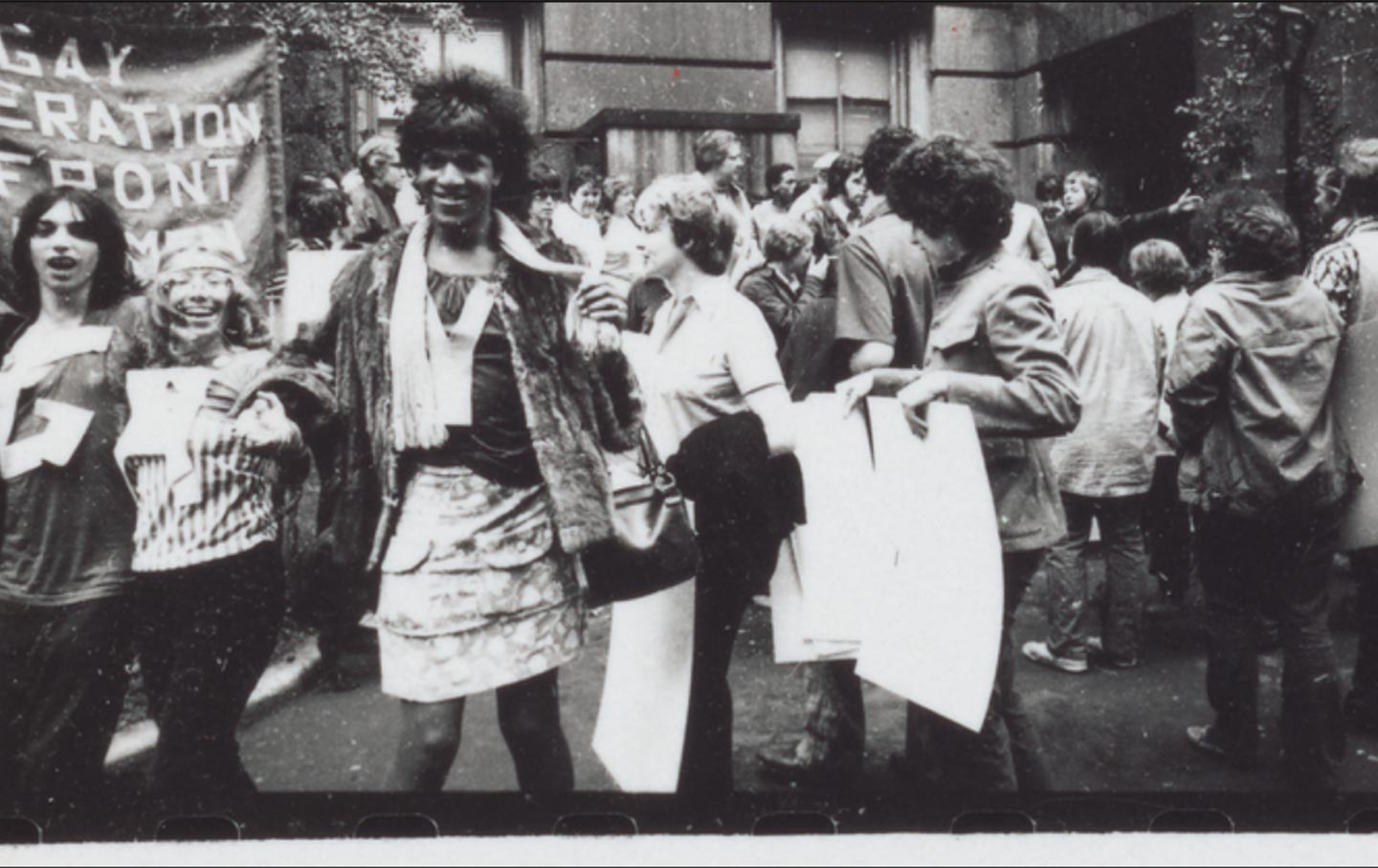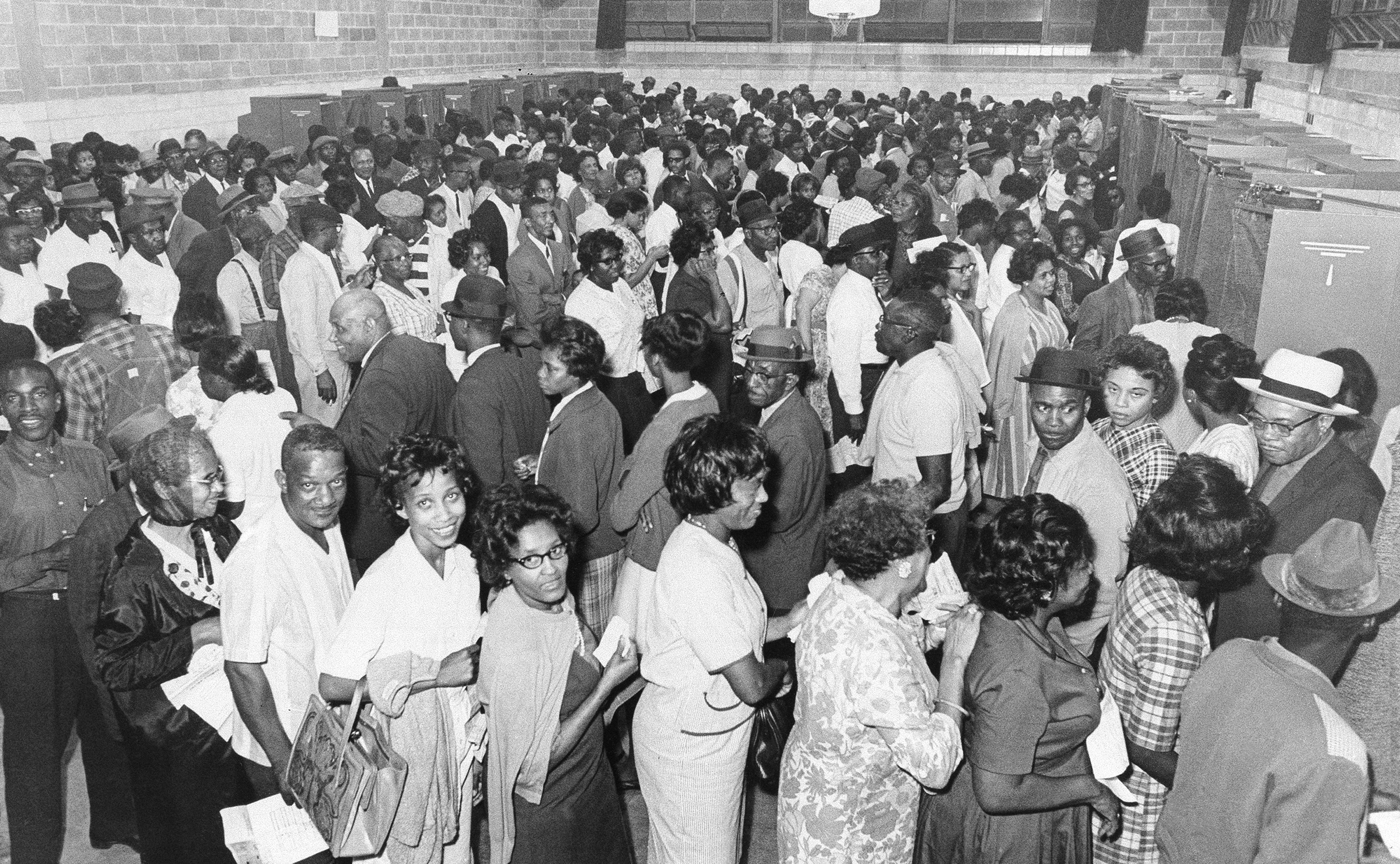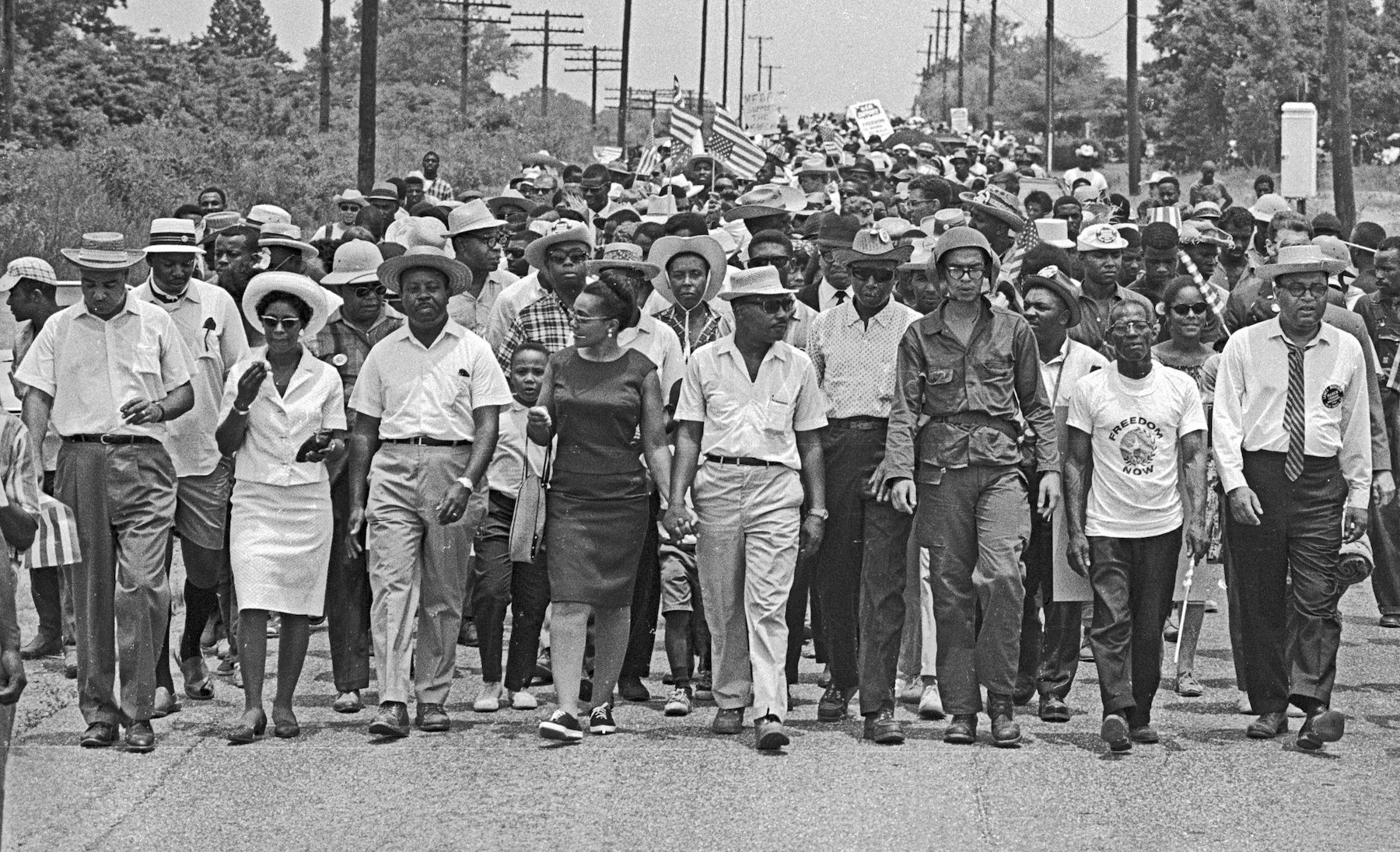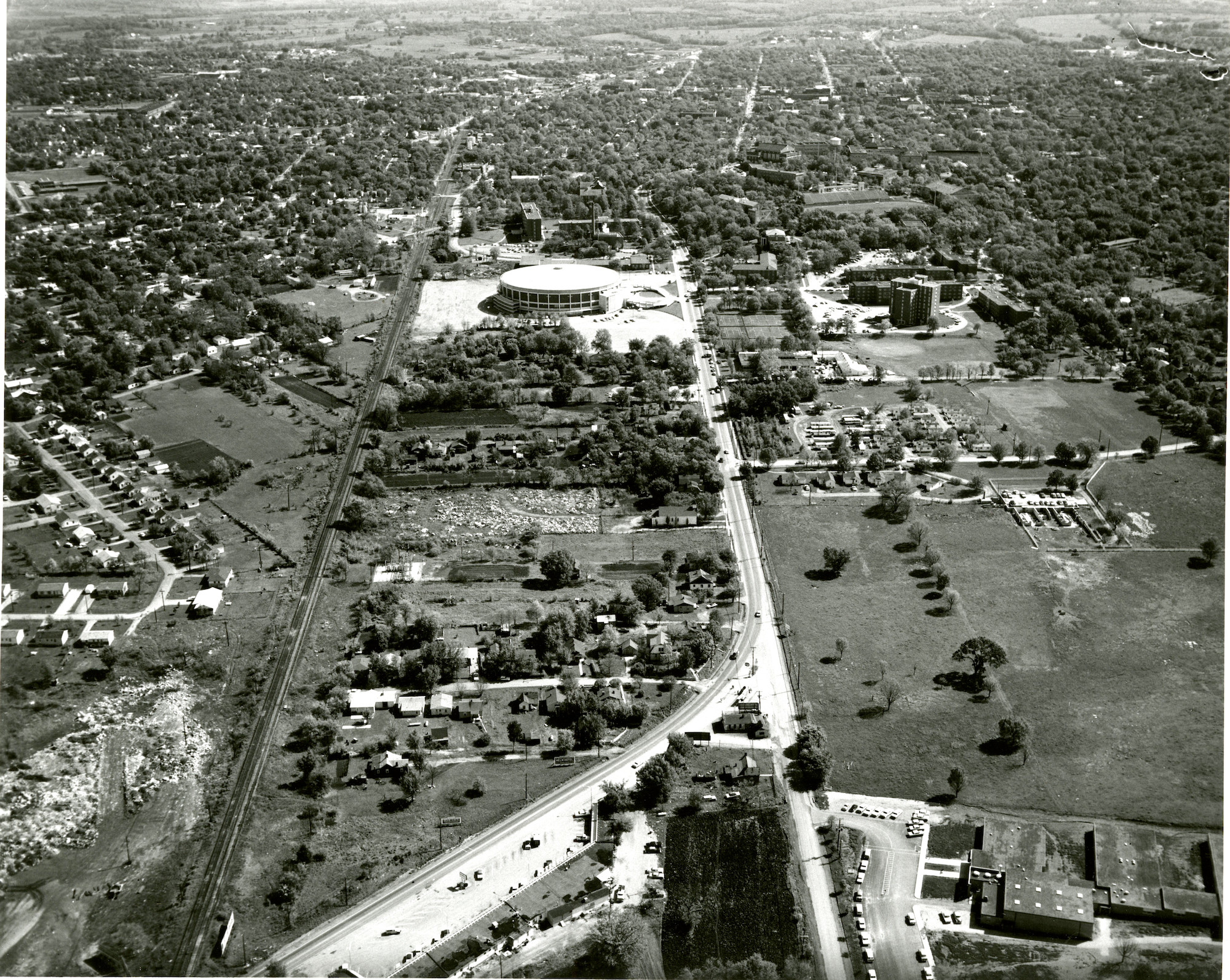WKU History - Previous Featured Images
Archived featured images (2020-2021)
Flag flown from the New York City headquarters of the NAACP (National Association
for the Advancement of Colored People) in 1936 as a protest against the ongoing lynchings
of Black people in the United States. The NAACP began an active anti-lynching campaign
after the 1916 lynching of Jesse Washington in Waco, Texas; this flag was displayed
between 1920 and 1938. The practice was only stopped after the building's landlord
threatened the NAACP with eviction. (Photographer unknown, image in Library of Congress
collection)
Source • More info
James Meredith walking to classes at the University of Mississippi (Ole Miss) in 1962,
accompanied by U.S. Marshalls. Meredith's attempt to enroll in the all-white university,
after a Supreme Court decision in favor of his claims of racial discrimination by
Ole Miss, was followed by riots that left two dead; Attorney General Robert F. Kennedy
sent in federal marshalls and then the National Guard to restore order. Meredith registered
as the university's first African-American student on October 1, 1962, and graduated
the following year. (Photo by Marion S. Trikosko, U.S. News & World Report)
Source • More info
1964 "Freedom Summer" in Mississippi: a campaign (planned largely by SNCC, the Student
Non-Violent Coordinating Committee) where Black and White college students joined
with Mississippians to register African-American voters, establish "Freedom Schools,"
and organize the Mississippi Freedom Democratic Party to challenge the state's racially
segregated Democratic Party. The murder of civil rights workers James Chaney, Andrew
Goodman, and Michael Schwerner in June 1964 by the Ku Klux Klan with the help of local
police drew national outrage. When state authorities failed to pursue the case, a
federal investigation led to four convictions by an all-white jury in 1967; those
found guilty served only brief prison terms. Pressure from the multiracial Philadelphia
Coalition got the case reopened in 2004, resulting in a 60-year sentence for one perpetrator
before the investigation was officially closed in 2016. (Photographer unknown, image
from PBS "Freedom Summer" documentary.)
Source • More info
Angela Davis arrested by the FBI in New York on October 13, 1970. Davis, a radical
feminist and activist, was assistant professor in the Philosophy Department of UCLA
in 1969 before being fired by the Board of Regents -- first for membership in the
Communist Party, and then, when this firing was ruled illegal, for using "inflammatory
language." After firearms registered to her were used in the killing of a California
Superior Court judge in August 1970, Davis (who was not directly involved in the incident)
was placed on the FBI's 10 Most Wanted Fugitives list and apprehended two months later.
Davis publicly declared her innocence in January 1971, and several "Free Angela Davis"
campaigns helped get her released on bail over a year later; she was found not guilty
by an all-White jury in June 1971. Since then, Davis has been a professor at the Claremont
Colleges, San Francisco State University, the University of California, Santa Cruz,
and Rutgers University, and has written books on feminism, race and class, and the
abolition of the prison system, as well as continuing her activism for a number of
causes. (Photo by Richard Corkery, NY Daily News Archive, via Getty Images.)
Source • More info
Black students (John Hardy, left, and Curtis Murphy, center) sit at Walgreen's lunch
counter in downtown Nashville, Tennessee, on February 20, 1960. The store closed the
counter rather than serve the students, who were participating in an organized, nonviolent
campaign against segregation. Many of the students were assaulted by White customers,
and starting in late February they were also arrested and charged with disorderly
conduct, but continued protesting, while Black customers began a boycott of downtown
stores. After the house of of Z. Alexander Looby, a city councilman and civil rights
lawyer helping to defend the students in court, was bombed in April, over 2,000 Fisk
University students marched to City Hall to confront the mayor. The following month
Nashville's lunch counters were desegregated, though protests against segregation
in other places – such as movie theaters, restaurants, and bus stations – would continue
up to the Civil Rights Act of 1964. (Photo by Jimmy Ellis, The Tennessean).
Source • More info
John Lewis beaten by state trooper during "Bloody Sunday" protest on March 7, 1965.
To address widespread disenfranchisement of African-Americans, the Student Nonviolent
Coordinating Committee (SNCC) began voter registration campaigns in Alabama in early
1963. Protests escalated up to 1965 after activists were arrested and attacked, and
during a march to Montgomery led by Lewis (chairman of SNCC) and others on March 7, law enforcement stopped protestors at the Edmund Pettus Bridge
in Selma and beat and tear-gassed them to force them to disperse; several marchers
were badly injured, including Lewis, who suffered a skull fracture. The protests helped
enable passage of the Voting Rights Act in August 1965. Lewis, elected U.S. Representative
for Georgia in 1986, recently passed away on July 17, 2020, on the same day as fellow civil rights leader Reverend C.T. Vivian, who was also present at the "Bloody Sunday" march, and who had previously participated
with Lewis in Nashville lunch counter sit-ins in 1960. (Associated Press Photo)
Source • More info
Black students being escorted by Louisville and Kentucky State police at the end of the
school day, September 8, 1975. Court-ordered busing between Louisville city schools and
predominantly White suburban schools began on September 4, to counter the de facto
segregation of schools within Jefferson County. The program was met with widespread
protests by White families opposed to busing, as well as violence against Black students; Louisville's
mayor called in the Kentucky National Guard on September 6 in response to rioting,
and armed guards began riding with students beginning September 8. While anti-busing
protests continued up to the Democratic Convention in Louisville in November, the
program continued and general opposition to school integration measures eventually
began to decline. After a 2007 U.S. Supreme Court decision that race could not be
the primary factor in assigning students to schools, district officials had to design
alternative plans to foster racial and socioeconomic integration across schools in
the Louisville area. (Photo by Keith Williams, The Courier-Journal)
Source • More info
African American sports stars surround boxer Muhammad Ali in Cleveland as he defends
his refusal to be inducted into the armed forces during the Vietnam War on June 4,
1967. Ali’s rejection of the draft, along with his earlier embrace of the Nation of
Islam, was unpopular among white and Black Americans alike; many reporters refused
to use his Muslim name. Fellow athletes tried to convince Ali to agree to participate
in exhibitions for US troops in exchange for being allowed to continue boxing professionally.
However, Ali would not back down from his stated position: “Why should they ask me
to put on a uniform and go 10,000 miles from home and drop bombs and bullets on brown
people in Vietnam after so-called Negro people in Louisville are treated like dogs
and denied simple human rights?” The athletes supported him, but an all-white jury
ruled he had illegally evaded the draft, and he was fined and banned from boxing until
the US Supreme Court overturned his case in 1971. (Photo by Robert Abbott Sengstacke,
Getty Images)
Front, left to right: Bill Russell, Ali, Jim Brown, and Lew Alcindor (later Kareem
Abdul-Jabbar). Behind: Carl Stokes (months later Mayor of Cleveland), Walter Beach,
Bobby Mitchell, Sid Williams, Curtis McClinton, Willie Davis, Jim Shorter, and John
Wooten.
Source • More info
Shirley Chisholm on November 5, 1968, after winning the election for New York's 12th Congressional District and becoming the first Black woman to join the U.S. House of Representatives. Chisholm, who earned a degree in education, and had previously been a nursery school teacher and director as well as a member of several political organizations in Brooklyn, served as a New York State legislator between 1965 and 1968. Chisholm's 1968 campaign emphasized her connection to her district, and tactics like driving through local streets with a loudspeaker or speaking Spanish with prospective constituents led her to a 2-to-1 victory. She was a founding member of the Congressional Black Caucus and the National Women's Political Caucus in 1971, and the National Congress of Black Women in 1984. Chisholm also ran for president of the United States in 1972. She retired from Congress in 1983, though she remained politically active; after her death in 2005, Shirley Chisholm was awarded the Presidential Medal of Freedom in 2015 (Pictorial Parade/Getty Images Photo).
Marsha P. Johnson protesting with the Gay Liberation Front in front of New York City Hall following the Stonewall riots in the summer of 1969. The riots, a series of violent confrontations with police that began in response to a raid on the Stonewall Inn in June 1969 (and to years of discrimination beforehand), were a landmark moment for LGBTQ rights in the United States. Johnson was among those resisting police at Stonewall, and a key figure in the gay rights movement it helped generate. The Gay Liberation Front, formed a month later, organized marches and protests to continue the momentum from Stonewall, and led to related groups like the Lavender Menace (a lesbian activist organization) and Street Transvestite Action Revolutionaries (STAR), founded by Johnson and Sylvia Rivera, a close friend. Although Marsha P. Johnson struggled for much of her life with poverty, homelessness, and mental illness, she remained active in the fight for gay (and trans, though the term wasn't commonly used then) rights up until her death in 1992. (Associated Press Photo)
African-American voters line up to vote in the Democratic primary election in Birmingham, Alabama, on May 3, 1966. This election was the first major one after the 1965 Voting Rights Act took effect. The Act, aimed at ending widespread disenfranchisement of Black voters, had been passed in August 1965, following a long campaign of civil rights protests; in particular, the spectacle of "Bloody Sunday" on March 7, when participants in a protest march were assaulted by state troopers as they crossed the Edmund Pettus Bridge in Selma, Alabama, was instrumental in moving President Lyndon Johnson and Congress to action. (Associated Press Photo)
Juanita Abernathy, Ralph Abernathy, Coretta Scott King, Martin Luther King Jr., Floyd McKissick, and Claude Sterrett participating in the March Against Fear, 1966. On June 5, James Meredith set off on a solo march from Memphis, Tennessee to Jackson, Mississippi, both to protest continuing racism and to encourage voter registration among African-Americans. Although Meredith had intended not to make it a major media event, after he was wounded by a white gunman on the second day, civil rights organizations (including the Student Nonviolent Coordinating Committee, the Southern Christian Leadership Conference, and the Congress of Racial Equality) traveled to Mississippi en masse to continue the march, with some 15,000 people – including a recovering Meredith – entering Jackson on June 26. (Photo credit Bob Fitch)
In 1964, WKU began the demolition of Jonesville, a black village encompassing about thirty acres and located on the western border of its campus. Jonesville was home to many of Bowling Green’s black professionals including schoolteachers, doctors, dentists, and ministers. In addition, the community also was comprised of numerous businesses including a funeral home, gas station, restaurant, grocery store and boarding house. Wanting to expand its campus, the University did not have the financial resources to purchase the properties at fair market value and thus took advantage of urban renewal policies to condemn the homes for arbitrary infractions such as unsatisfactory standards of maintenance or not meeting minimum yard setting requirements. Jonesville’s residents vigorously resisted this initiative, as it was readily apparent to them that the reason for choosing the Jonesville corridor had more to do with race than other considerations. WKU’s urban renewal project succeeded but, in the process, destroyed black proprietorship in Jonesville and induced many residents to relocate to north Bowling Green or to public housing in the Delafield area. (Caption by Selena Sanderfer and Alexander Olson; photo credit WKU Archives)
Some of the links on this page may require additional software to view.


